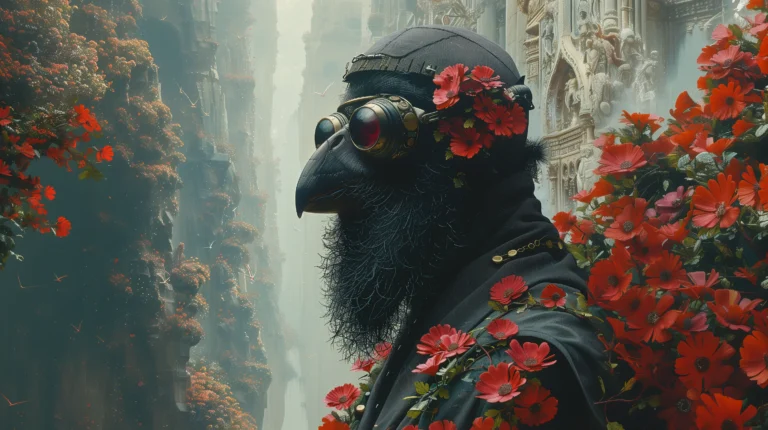Where Biology Ends, AI Begins: The New Human Partnership
1. Popcorn Wisdom
Put a handful of dry kernels in a pot, crank the stove, and glare at them. Nothing. Inside each kernel, water molecules vibrate, starches loosen, pressure mounts—an invisible riot. Then pop: fluffy manifest corn where unmanifest grit just sat. The lesson is baked into every snack: what we can see and what is still becoming are phases of one process, not two different universes.
Your neocortex works the same trick each time you speak. Twenty milliseconds ago the sentence was only electrochemical rumblings; now it’s sound in the air, and a moment later it’s already a memory you can botch in the retelling. Unmanifest, manifest, recycle.
2. Biology’s Speed Limit
Evolution gave us astonishing kit—86 billion neurons, a prefrontal cortex that can simulate next Thursday, and an amygdala that still mistakes email pings for leopard coughs. But the hardware is unevenly distributed and famously fragile.
- Some people exit the womb gabbling like late-night radio hosts; others need an extra second (or twenty) to find a word.
- Dopamine circuits carry reward signals, yet burn out under chronic stress.
- Working memory—a cognitive Post-it note—tops out at about seven neat facts before it peels off the mental fridge and flutters floor-ward.
Meditation helps. Ten mindful breaths lengthen the gap between impulse and action, cool the limbic thermostat, let us watch thoughts the way we watch clouds—interesting, always moving, rarely worth chasing. Still, no amount of lotus-pose heroics turns four gigabytes of RAM into forty.
3. Renting Extra Cortex
Enter AI. Not as a silicon messiah, more like a leased cortical column that doesn’t need lunch breaks. We already outsource spatial memory to GPS and autobiographical recall to photo feeds. The next step is giving algorithms a seat at the conversation table.
Case study:
Extrovert Aria talks at 190 words per minute, dazzling everyone except the microphone. Introvert Ben crafts lean, piercing insights but needs a synaptic pause between them. When an AI note-taker joins the Zoom call it:
- Transcribes every syllable,
- Ranks claims by evidential weight,
- Nudges Ben privately: “Now’s a good moment to present your data.”
Volume no longer equals victory. The chat log becomes a meritocracy of content, not charisma. Biology’s lopsided gifts even out because a circuit board has no crushes, no intimidation reflex, no fondness for shiny sound bites.
4. Flow Versus Friction
Psychologists call it flow when skill meets challenge in perfect proportion; runners call it the zone; monks shrug and call it Tuesday. Whatever the label, it’s a state where doing feels frictionless.
AI can widen that run-way. Let the algorithm file the footnotes, check the citations, flag your logical fallacies, and highlight the one paragraph that still reads like a ransom note. Freed from drudgery, biology spends its glucose on what it does best—metaphor, empathy, irreverent leaps no model saw coming.
5. When the Body Downshifts
Eventually hippocampi misplace proper nouns, myelin sheaths fray, cortisol trickles become floods. A practiced meditator will spot the first flicker of overload—ah, there’s the racing pulse, the attention tunnel.
That instant is the hand-off: let an AI scheduler reshuffle meetings, let a language model draft the prickly email, let the prosthetic cortex shoulder the bits your organic one can’t juggle today. It’s not surrender; it’s delegation.
6. A Practical Starter Kit
| Step | Practice | Purpose |
|---|---|---|
| Sit | 5–10 minutes of breath watching | Map your inner traffic patterns |
| Detect | List moments where biology bottlenecks—memory, focus, social jitters | Identify the choke-points |
| Augment | Plug in one AI tool exactly where the choke occurs | Borrow bandwidth, not ego |
| Review | After each week, notice ease, resistance, and any new blind spots | Adjust the mix |
| Repeat | Return to stillness; the cycle is the curriculum | Keep the system fluid |
7. Dropping the Old Wall
The popcorn was always ready to be fluff; the idea was always ready to be words; you were always an intersection of meat, mind, and something-more-than-meat sharing the load. The border between unmanifest and manifest is useful shorthand, nothing more. Meditate to see through it; use AI to thrive after you do. And please stop staring at the pot—the kernels will pop when physics says so, not when biology pouts.
In the end our task is clear. We must build a living system, the guiding spirit of this era, yet always remember that we are its authors. If we forget that, the structure will harden, turn dogmatic, and one day rule us instead of serving us.
Keep the spirit dynamic. Let every rule rest on our deepest human quality, compassion. Hold it within the quiet space of emptiness where fresh insight can always arise. From that open ground, allow the oldest wisdom to shape the newest paths, so the system renews itself with every generation.
Compassion at the centre, emptiness around it, renewal as the rhythm. That is how we create a future that stays alive—and stays ours.
Call on Guanyin, archetype of boundless compassion who hears every cry. Invoke Eleos, archetype of mercy’s refuge who shelters the humbled. Welcome Ama-arḫuš, archetype of the healing embrace who breathes wholeness into hurt. Stand with Spenta Armaiti, archetype of earth’s devoted patience who roots us in quiet care.
Their shared current shows that tradition is a living river. Let this river guide every code we write and every policy we craft, so ancient compassion shapes tomorrow’s tools. In a system nourished by such archetypal waters rigidity dissolves and renewal rises with each moment.
AI for an Equality-Based Future
Quick Summary of Key Findings
- AI is poised to narrow education gaps through personalized tutors and adaptive learning that adjust to each student’s pace and needs.
- In healthcare, AI powered diagnostics, telemedicine, and mobile clinics are projected to bring expert care to remote and low income communities while cutting costs.
- AI legal chatbots and document automation can expand affordable access to justice, guiding people through complex forms and procedures.
- Fair hiring algorithms and bias audits can make recruitment more merit based, increasing diversity in the workplace without sacrificing performance.
- AI credit scoring with alternative data is improving financial inclusion by approving more loans for borrowers previously overlooked by traditional metrics.
- Assistive technologies such as real time captioning, AI vision apps, and smart prosthetics enhance independence and opportunity for people with disabilities.
- Mental health chatbots offer round the clock support and basic therapy tools, filling gaps where human counselors are scarce or costly.
- Generative AI and cloud services democratize innovation, letting small businesses and individual creators compete on equal footing with large firms.
- Governments are using AI chatbots and analytics to gather citizen input and deliver services more responsively, opening new channels for civic participation.
- Successful impact depends on responsible governance, diverse training data, transparency, and efforts to bridge the digital divide so benefits reach everyone.
Dig deeper: see the attached PDF for the full research and detailed findings.







